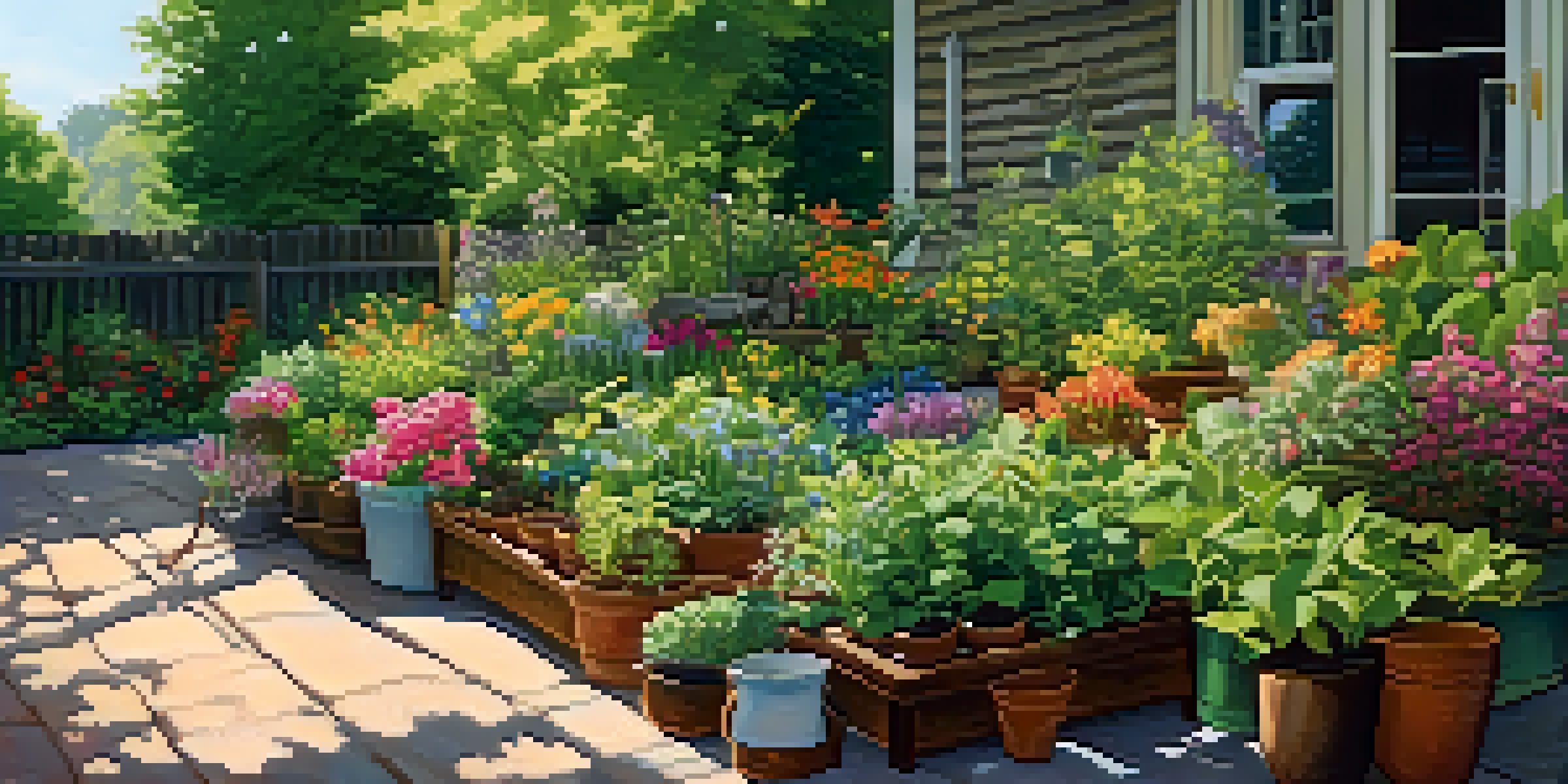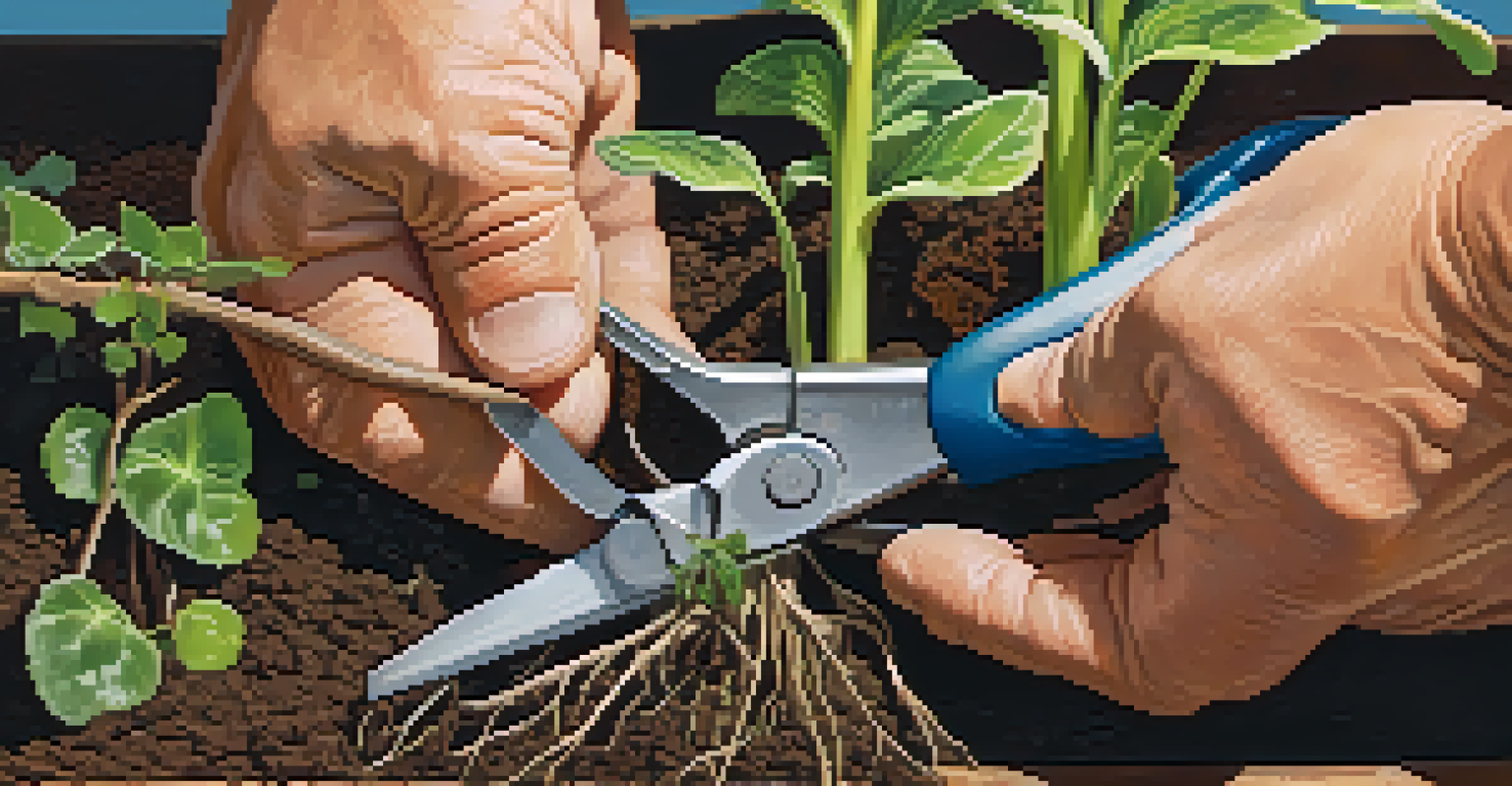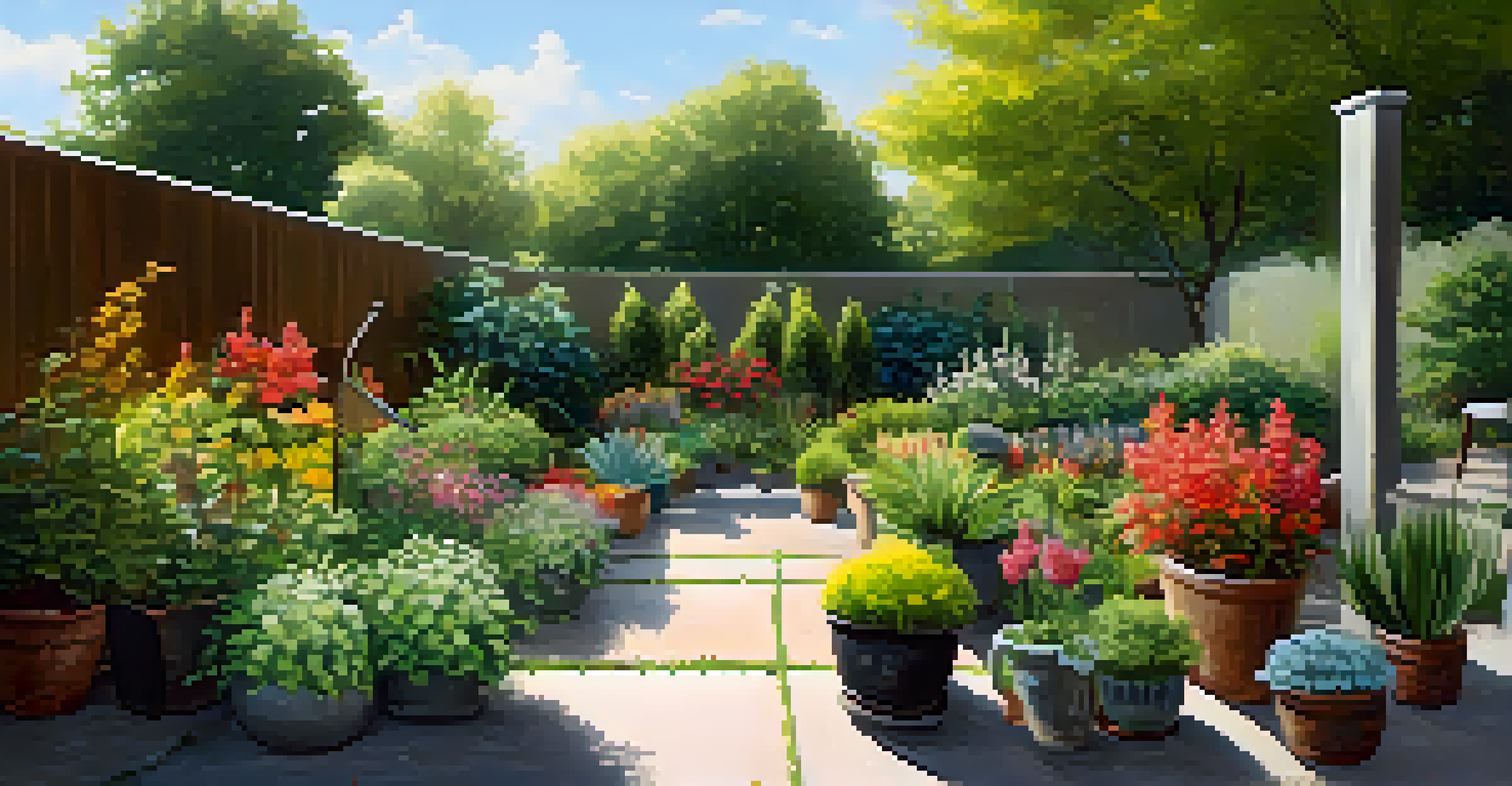Division Method: How to Propagate Plants by Division

Understanding Plant Division for Propagation
Plant division is a propagation method that involves separating a single plant into multiple sections, each capable of growing into a new plant. This technique is particularly effective for perennials, which naturally form clumps over time. By using division, gardeners can rejuvenate overcrowded plants while also expanding their garden.
The best time to plant a tree was twenty years ago. The second best time is now.
To visualize this, think of a densely packed clump of grass. Just as you can divide that clump into smaller sections to promote healthy growth, you can apply the same principle to various perennial plants. This method not only helps maintain plant health but also allows for easy sharing with friends or neighbors.
Overall, understanding the basics of plant division sets the stage for successful propagation, making it a valuable skill for both novice and experienced gardeners.
When to Use the Division Method for Plants
Timing is crucial when it comes to dividing plants effectively. The best time to propagate through division is typically during the growing season, either in spring or early fall. At this point, plants are actively growing, making them more resilient to the stress of division.

For instance, if you divide a plant in spring, it can quickly establish its new roots and start thriving as the weather warms. Conversely, dividing in the fall allows plants to settle in before winter, giving them a head start come spring.
Timing is Key for Plant Division
Dividing plants during their active growing season in spring or early fall promotes better recovery and growth.
Observing your plants for signs of overcrowding or diminished blooms can also indicate when it's time to divide. If a plant looks cramped or is not performing as well as it used to, it might be time to consider division.
Preparing Your Tools for Plant Division
Before diving into the division process, it's essential to prepare your tools to ensure a clean and effective operation. You’ll need a sharp spade or garden fork, a clean pair of pruning shears, and gloves for protection. Properly sanitized tools help prevent the spread of disease between plants.
Gardening adds years to your life and life to your years.
Imagine trying to cut a cake with a dull knife—it's messy and ineffective. Similarly, using sharp, clean tools makes the division process smoother and minimizes stress on the plants. A clean cut also encourages faster healing for the divided sections.
Additionally, having a potting mix or compost ready will ensure that your new plant sections have a nutrient-rich environment to thrive in after division.
How to Properly Divide Plants
Dividing plants is a straightforward process, but it requires a bit of care to ensure success. Start by carefully digging around the base of the plant, using your spade or fork to loosen the soil. Once you can lift the plant, gently shake off excess dirt to expose the root system.
Next, inspect the roots and decide where to separate the plant. Aim for sections that have multiple shoots and healthy roots. Using your shears, cut through the root system cleanly, ensuring each division has enough roots to support new growth.
Proper Tools Ensure Success
Using sharp and sanitized tools minimizes stress on plants during division, promoting healthier cuts and faster healing.
Lastly, replant each division in its new home, whether that's in a pot or directly in the garden. Water them well to help reduce transplant shock and encourage root establishment.
Caring for Newly Divided Plants
Once you've divided and replanted your plants, it's crucial to provide them with the right care to help them establish. Newly divided plants may experience transplant shock, so keeping the soil consistently moist, but not soggy, is vital during this initial phase. This watering routine promotes healthy root development and stability.
Additionally, providing some shade for the first few weeks can help reduce stress on the newly divided plants. Just as we might need a little rest after a big change, plants benefit from a gentler environment as they adjust to their new settings.
After a few weeks, gradually introduce them to their regular sunlight exposure, allowing them to acclimate and thrive in their new surroundings.
Common Mistakes to Avoid During Division
Even seasoned gardeners can make mistakes during the division process, so awareness is key. One common error is dividing plants too late in the season, which can hinder their ability to establish before winter. Timing your division properly ensures that each section has the best chance of thriving.
Another mistake is not providing enough roots with each new division. Each section should have a healthy amount of root mass to support the plant's growth. Without sufficient roots, the divided plants may struggle to take hold and may ultimately fail.
Care After Division is Crucial
Providing adequate water and shade to newly divided plants helps them establish roots and thrive in their new environment.
Lastly, neglecting post-division care can lead to disappointing results. Pay attention to watering and sunlight needs to give your plants the best chance of flourishing after division.
Expanding Your Garden with Divided Plants
One of the greatest joys of using the division method is the opportunity to expand your garden without the cost of purchasing new plants. By dividing existing plants, you can create a more diverse and lush garden space. This not only enhances the aesthetic appeal but also promotes biodiversity.
Consider how a single hosta can multiply into several beautiful clusters around your garden. This technique not only beautifies your space but also allows you to experiment with different arrangements and designs, making your garden a unique reflection of your style.

Furthermore, sharing your divided plants with friends or family can foster community and connection. It's a delightful way to share your gardening passion and perhaps even inspire others to start their own gardening journey.